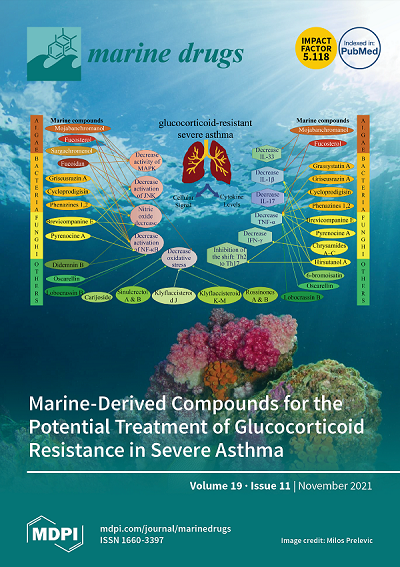安全注射型胶原-藻酸盐复合凝胶中的生物活性胶质细胞神经营养因子能拯救兔子视网膜光感受器,使其免于视网膜退化
IF 4.9
2区 医学
Q1 CHEMISTRY, MEDICINAL
引用次数: 0
摘要
由于缺乏有效的给药系统,治疗危及视力的视网膜疾病仍然充满挑战。封装细胞疗法(ECT)为持续给药而无需使用免疫抑制剂提供了一种前景广阔的方法。在这种情况下,一种可注射和可终止的胶原-精氨酸复合(CAC)ECT凝胶被设计成一种安全的眼内给药平台,用于持续释放胶质细胞系源性神经营养因子(GDNF)以治疗视网膜退行性疾病。本研究考察了 CAC ECT 凝胶的潜在临床应用,重点是其安全性、性能和在健康新西兰白兔眼中服用强力霉素 (Dox) 的终止时间,以及在碘酸钠(SI)诱导的视网膜变性家兔中的疗效。研究结果表明,CAC ECT凝胶可安全植入视网膜或晶状体,不会对视网膜或晶状体造成伤害,具有抗降解、促进细胞附着和分泌生物活性GDNF的特性。此外,GDNF的水平可通过植入物的数量来调节。此外,使用 Dox 能有效终止凝胶的功能,而不会造成视网膜损伤。值得注意的是,使用凝胶治疗视网膜变性的兔子在a波和b波振幅方面都表现出明显的功能恢复,并在减少光感受器凋亡方面表现出显著的功效。我们的 CAC ECT 凝胶具有生物相容性、机械稳定性、药物释放可控性、可终结性和治疗效果,是临床上治疗各种视网膜疾病的一种很有前景的治疗策略,而且无需使用免疫抑制剂。本文章由计算机程序翻译,如有差异,请以英文原文为准。
Bioactive Glial-Derived Neurotrophic Factor from a Safe Injectable Collagen–Alginate Composite Gel Rescues Retinal Photoreceptors from Retinal Degeneration in Rabbits
The management of vision-threatening retinal diseases remains challenging due to the lack of an effective drug delivery system. Encapsulated cell therapy (ECT) offers a promising approach for the continuous delivery of therapeutic agents without the need for immunosuppressants. In this context, an injectable and terminable collagen–alginate composite (CAC) ECT gel, designed with a Tet-on pro-caspase-8 system, was developed as a safe intraocular drug delivery platform for the sustained release of glial-cell-line-derived neurotrophic factor (GDNF) to treat retinal degenerative diseases. This study examined the potential clinical application of the CAC ECT gel, focusing on its safety, performance, and termination through doxycycline (Dox) administration in the eyes of healthy New Zealand White rabbits, as well as its therapeutic efficacy in rabbits with sodium-iodate (SI)-induced retinal degeneration. The findings indicated that the CAC ECT gel can be safely implanted without harming the retina or lens, displaying resistance to degradation, facilitating cell attachment, and secreting bioactive GDNF. Furthermore, the GDNF levels could be modulated by the number of implants. Moreover, Dox administration was effective in terminating gel function without causing retinal damage. Notably, rabbits with retinal degeneration treated with the gels exhibited significant functional recovery in both a-wave and b-wave amplitudes and showed remarkable efficacy in reducing photoreceptor apoptosis. Given its biocompatibility, mechanical stability, controlled drug release, terminability, and therapeutic effectiveness, our CAC ECT gel presents a promising therapeutic strategy for various retinal diseases in a clinical setting, eliminating the need for immunosuppressants.
求助全文
通过发布文献求助,成功后即可免费获取论文全文。
去求助
来源期刊

Marine Drugs
医学-医药化学
CiteScore
9.60
自引率
14.80%
发文量
671
审稿时长
1 months
期刊介绍:
Marine Drugs (ISSN 1660-3397) publishes reviews, regular research papers and short notes on the research, development and production of drugs from the sea. Our aim is to encourage scientists to publish their experimental and theoretical research in as much detail as possible, particularly synthetic procedures and characterization information for bioactive compounds. There is no restriction on the length of the experimental section.
 求助内容:
求助内容: 应助结果提醒方式:
应助结果提醒方式:


